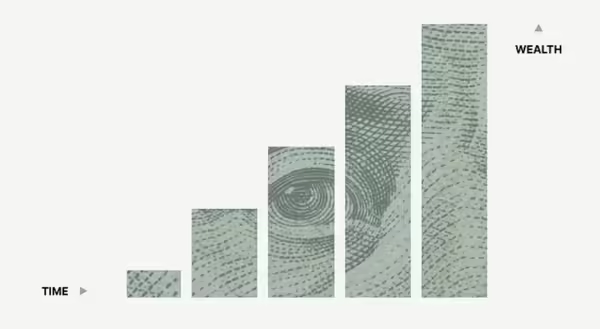
Financial wellness goals often include feeling financially secure in the future. While this may look different for everyone, building financial reserves may be a challenge. The reported personal savings rate as a percentage of disposable income for April 2024 is 3.6%, which is noticeably lower than the 5.2% in April of 2023. Achieving financial security may even feel out of reach for many, so why even try? Intentional savings is a way to build wealth. Starting a saving habit early in life can pay off big in the future. Take the time to make saving a part of your financial plan and work on building wealth.
Small amounts add up
Even small amounts can add up if you are consistent over time. Try to put an amount of money toward saving each day, week, or month. The amount may not seem like much in small increments, but when you build a saving habit and stay consistent the amount will grow over time. For example, a can of soda may cost around $0.59 each (April 2024 average from the Federal Reserve of St. Louis), which does not seem like much if you drink one a day. If you decided to save that $0.59 each day instead, this could amount to $215.35 ($0.59 x 365 days). Now think about if you found a way to earn interest on the money you are saving. The Office of Financial Readiness (FINRED) has several savings calculators to help with creating your savings plan.
Compounding interest
Interest can apply to both borrowing and saving money. When you borrow money, you want to find the lowest annual percentage rate (APR) because the interest is charged as part of the cost of the loan. In the event of saving, interest accrued with saving money helps build wealth so you want to seek out the highest annual percentage yield (APY) available. Basic savings accounts tend to have lower APY, so it may be worth exploring and comparing some options like a high-yield savings account, a certificate of deposit (CD), a savings bond, or an investment account, depending upon your comfort with risk and liquidity needs (some of these options may restrict your access or charge fees for early withdrawal depending on the terms).
For example, if you start saving $20 per month ($240 per year) with monthly compounding interest, here is how the savings could look with different APYs:
APY* After 1 year of monthly deposits and interest* After 5 years
0.00% $240.00 $1,200.00
0.45% $240.57 $1,213.80
1.80% $242.34 $1,256.08
5.25% $247.47 $1,389.45
*Compare monthly compounding interest at different rates
The May 2024 averages from the Federal Reserve Economic Data (FRED) are available for national savings deposit rates (0.45%), national interest checking (0.08%), national money markets (0.68%), national 12-month CD (1.8%), national 6-month CD (1.79%), Treasury Yield: 12-month CD (5.25%), and Treasury Yield: 6-month CD (5.44%). Check around to see what options work best for your financial goals.
Pay debt or save
When choosing between paying down a debt or building savings, how do you choose? Does it make sense to save when you have debt? The answer may be different depending on the circumstances. In some cases, you may even be able to make more money saving than a loan may cost you depending on when you took out a loan and what interest rate you were given. Neglecting to make a habit of saving may prevent you from building wealth over time. In some instances, choosing not to take advantage of saving through employee retirement matches or the tax deferment from eligible retirement contributions.
Plan ahead and create habits
When making a spending plan, make saving a priority. Having an emergency savings plan can prevent the need to borrow when an unexpected expense arises, but saving money with a goal of building wealth may also be worth considering. Build toward the financial future you desire by making saving a consistent habit at every opportunity.
References
Average price: All soft drinks, 12 PK, 12 ounce, cans (cost per 12 ounces/354.9 milliliters) in U.S. city average. (2024). Federal Reserve Economic Data (FRED).
Federal Reserve Economic Data: Saving accounts. (2024). Federal Reserve Economic Data (FRED).
FINRED Savings Calculators. (2024). Office of Financial Readiness (FINRED).
Mahlandt, J. (2023). Let’s find your financial balance. Finding Financial Balance - University of Illinois Extension.
Personal saving rate. (2024). U.S. Bureau of Economic Analysis (BEA).
Subscribe
Subscribe to blog updates HERE.
Meet the Author
Jamie Mahlandt is a Financial Educator for Bond, Clinton, Jefferson, Marion, and Washington counties in Southern Illinois. She provides financial education to the local community with an emphasis on financial literacy and financial well-being.